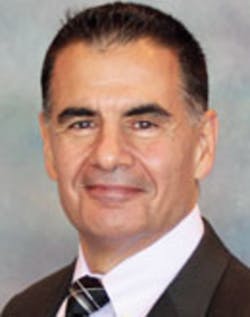General Manager, Healthcare IT,
Quest Diagnostics
New challenges are brewing in today’s complex and ever-changing reimbursement environment. There are regulatory transitions associated with going from volume- to value-based care, increased patient payment responsibility due to high-deductible health plans, and the need to reduce operating costs. These challenges are just a few of the reasons why hospital CEOs identified financial challenges as a top concern in 2017, according to a survey1 by the American College of Healthcare Executives.
What seems like a formidable revenue cycle can result in leaving money on the table and dragging down the financial health of your organization. Fortunately, there are 7 overlooked opportunities in the revenue cycle that, with a little attention, may help improve payment collection.
- Revenue capture: Organizations need to not only understand what to code, but also what to document. Make sure you have a reconciliation protocol which captures all care delivered by your organization and bills them appropriately.
- Work queue management: Methodically and systematically prioritize your workflow. Sort work queues by dates and dollar amount. Determine productivity expectations for staff working on patient accounts.
- Denials: Understand why you are not getting paid. Identify the source of denials through reports and discussions with staff, and then fix the problem. Train staff about these issues and review top denials at every staff meeting. Don’t forget to recognize the contribution of every employee in the denial-management process.
- Payments: Not all payers pay correctly. Do you know what you are supposed to be getting paid? Obtain the allowables for all services, then load current allowables for all payers and products. Review them at the line-item level. Take action.
- Hiring the right people: You want a minimal amount of people in your accounts-receivable department. Hire energetic, make-it-happen, multitask-oriented people to work your accounts. Invest in these good employees and consider reassigning those who are less productive to areas of the practice that may align with their strengths.
- Patient collections: Today’s patient is also today’s new payer. Have a strategy for collecting payments from patients, whether by giving them a statement at registration, or redesigning your collection process. Consider migrating from your reliance on mailing statements—go electronic.
- Overhead: Overhead equals costs divided by revenue. Most of your costs are fixed and are therefore difficult to cut. Your first reaction may be to cut personnel to reduce overhead, but know that personnel cuts may negatively impact your infrastructure, resulting in overhead costs going up. Understand the true return on investment in your organization and apply it. You want to pay attention to costs, but put your energy into generating more revenue. Invest in your revenue cycle.
To help optimize these opportunities, consider employing technology that automates all stages of your revenue cycle—from scheduling to denials management. Automated processes make it possible to compile information from multiple sources, reduce steps, collect patient payments during registration, and respond in a timely fashion with the correct information. Another option for the ambulatory setting is to invest in a revenue cycle management (RCM) service where a team of medical billing experts can take these complicated billing issues off your plate. A successful RCM service will reduce the amount of time from patient service to receipt of payment.
Managing an organization’s revenue cycle is complex and crucial to the organization. Make sure you have the processes in place to optimize your RCM process.
Reference



